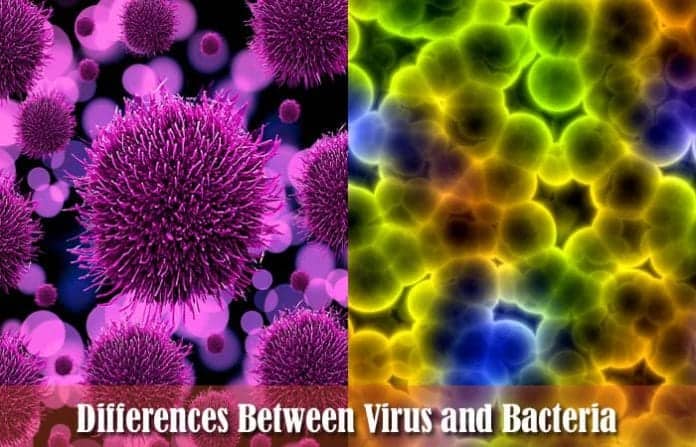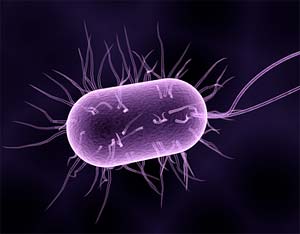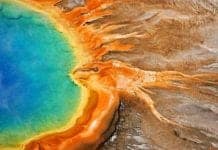
Infectious diseases continue to become one of the leading causes of mortality, disability, and economic impairment for numerous people worldwide.
Interestingly, the prevention, diagnosis, and treatment methods for these problems are only obtained from the knowledge of the differences between common pathogens like viruses and bacteria.
While it is true that viruses and bacteria are often (and sometimes mistakenly) associated with diseases, many find them to be seemingly indistinguishable. Despite being both microscopic in size, viruses and bacteria are in fact very distinct from one another.
Let us explore how are viruses different from bacteria at a microscopic level.
Table of Contents
What are Viruses?

By strict definition, viruses are just a chain of genetic material (RNA) enclosed in a protein capsule. So because of that, viruses are not even considered to be cells or made up of them.
Due to many reasons, viruses are often considered to be in the zone between living and non-living organisms.
- Aside from the reason mentioned above, it is because they lack the independent metabolism needed to replicate themselves outside a living host cell.
- Another interesting difference is that viruses do not only attack eukaryotic organisms; they even assault bacteria!
Viruses are known to be obligate intracellular parasites. They cannot be killed by antibiotics; however, these viruses can still be eliminated through vaccination.
Interestingly though, even if the symptoms caused by viruses cannot be treated, the host cell (sometimes) eventually develop immunity against it, enabling it to survive the infection.
![]()
What are Bacteria?

On the other hand, bacteria (singluar – bacterium) are single-celled organisms that are characterized by the pieces of their genetic material dispersed in cellular membrane fluid surrounded by a rigid cell wall.
Superficially, bacteria may seem to be mere simple organisms; however, they can be considered to be very sophisticated yet very adaptable.
Unlike viruses, they are capable of surviving and replicating themselves independently, traits that differentiate them from viruses.
- Relative to viruses, bacteria can be ten to a hundred times larger. Aside from that, they reproduce through binary fission where they simple divide as they replicate their own genetic material.
- However, it should be noted that there are some species of bacteria (i.e., Chlamydia and Rickettsia) that like viruses, are incapable of reproducing outside a host cell.
- Most of the commonly known bacteria are the pathogenic ones. The good thing is, some bacteria can be eliminated by interfering with their internal biological and physiological processes (through the use of antibiotics).
![]()
How Are Viruses Different From Bacteria?
For a more critical and more precise grasp of the topic, below is a tabulated list of the difference between viruses and bacteria.
| Aspect | Viruses | Bacteria |
|---|---|---|
| Structure |
The genomes of viruses can be comprised of single or double-stranded DNA or RNA. In general, viruses have two parts: (1) Nucleic acid genome – contains the genetic material of viruses; may be DNA or RNA. (2) Protein capsid – the protein shell that encloses the viral genome. Together, the genome and the protein shell are called as the nucleocapsid. (3) Viral envelope – only some viruses have this structure which serves as an additional layer of protection to the nucleocapsid. |
Despite their simplicity, bacteria have many structural features: (1) Chromosomal DNA – the genetic material of the bacterium. (2) Cell wall – functions to protect the cell from external pressures. (3) Cell membrane – location for the molecular transport inside the cell. (4) Ribosome – site of protein synthesis. (5) Plasmid – encodes for specific traits or characteristics. |
| Size |
In diameter, the size of viruses ranges from 20 to 750 nanometers. Note: Only the most complex and largest viruses can be observed under the microscope with very high magnification. |
Regarding size, bacteria are much larger than viruses. In general, their sizes range from 0.2 to 10 micrometers. Having this small size enables them to take in nutrients from the environment using diffusion (The principle behind this has a large surface area to cell volume ratio). |
| Shapes |
Viruses come in different shapes and sizes. Explore 5 different shapes and structure of virus here. |
Bacteria also come in many shapes and sizes. Explore all 13 bacteria shapes in detail here. |
| Cellular Organization | No | Yes |
| Living conditions |
Viruses are highly parasitic and cannot live on their own. Viruses are incapable of taking in food by any method. Viruses lack metabolisms of their own. |
Most bacteria can live inside and outside a host cell/organism. Bacteria take in food via absorption. Bacteria have metabolisms of their own. |
| Type of Genetic Material | Either DNA or RNA; can either be linear or circular; can be either single-stranded or double-stranded. | Both DNA and RNA. |
| Mode of Reproduction | Viruses do not have their own mode of reproduction. Viruses can only replicate when inside one and do so by injecting their genetic material into the cell or by terrorizing it completely. Explore how do viruses reproduce in detail here. | Binary fission is the mode of reproduction of bacteria. In this process, a single-celled bacterium mitotically divides into two daughter cells having identical DNA to the parent cell. |
| Growth and Development |
Viruses have two life cycles: (1) Lytic cycle – period where viral replication and infection occurs. (2) Lysogenic cycle – period where the virus integrates its nucleic acid into that of the host cell/organism. |
Bacteria dramatically grow and divide at a fast rate (exponential growth). The time needed for this division is known as the doubling time (or generation time). |
| Do they obtain and use energy? | No | Yes |
| Do they evolve? | Yes | Yes |
| Survival mechanisms | According to studies, viruses utilize different mechanisms to escape from the immune system of the host. These include a combination of speed and change of morphology, sabotage of the host’s cells, and camouflage. | Some bacteria have extreme defense mechanisms that make them very difficult to destroy and extremely resistant to environmental stress like heat and high pressure. When faced with such conditions, interestingly, some bacteria enclose themselves in dormant non-reproductive structures known as endospores. |
| Pathogenic examples | Some examples of worst killer viruses include Ebola virus, Rabies virus, Human Immunodeficiency virus (HIV), smallpox virus, and influenza virus. | Some of the deadliest species of bacteria include Bacillus anthracis (anthrax), Yersinia pestis (plague), methicillin-resistant Staphylococcus aureus (bloodstream infections), Neisseria gonorrhoeae (gonorrhea), and many more.
Explore 15 deadliest diseases caused by bacteria. |
| Non-pathogenic examples |
While almost all viruses are pathogenic to plants and animals, they are very host-specific and only affect particular organisms. For instance, some viruses are pathogenic to animals but do not affect humans. These include Aviadenovirus (birds), Myxoma virus (rabbits), Canine parvovirus (dogs), and many more examples. |
While it is a common notion that bacteria are disease-causing organisms, not all of them are bad. In fact, some of them are already present in the healthy microflora in the gut and even help during digestion and immunity against their evil counterparts. Some of these bacteria are in the genus Lactobacillus. |
| Will antibiotics work against them? | No. Antibiotics will not work on viruses because they have different modes of replication and have different structures as compared with bacteria. | Yes. However, cases of antibiotic resistance are becoming more common due to the misuse of these drugs. |
| Will vaccines work against them? | Yes. Vaccines work by priming the immune system against the possible entry of viruses. | Yes. Vaccines work by priming the immune system against the possible entry of bacteria. |
In conclusion, viruses and bacteria differ from each other mainly because of properties such as living attributes, mode of reproduction, mode of infection, as well as their killing agents.
Nevertheless, as more and more research is becoming geared toward microorganisms, it is just becoming more evident that there remains a lot to be discovered.
![]()
Cite This Page
References
- “Virus Structure”. Accessed June 03, 2018. Link.
- “How do bacteria differ from a virus? + Example”. Accessed June 03, 2018. Link.
- “Overview of Viruses | Boundless Microbiology”. Accessed June 03, 2018. Link.
- “The 9 Deadliest Viruses on Earth”. Accessed June 03, 2018. Link.
- “NON-PATHOGENIC* ORGANISMS. Accessed June 03, 2018. PDF Link.

















